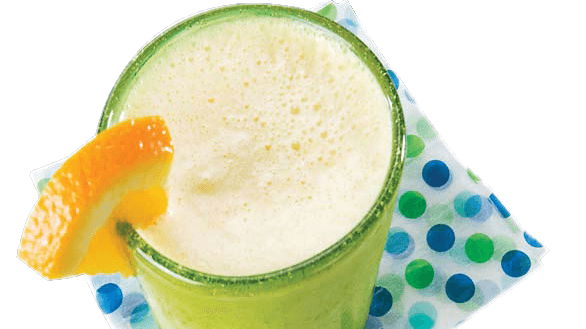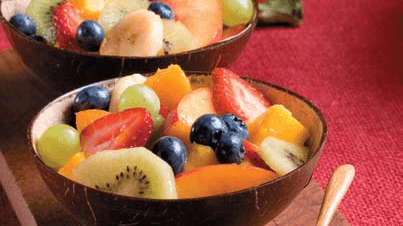
Nutrition Education
Sarah Flint, Lori Hale, Kristi Trahan
Welcome to our recipe and lessons page
CalFresh Statement
The CalFresh Program, federally known as the Supplemental Nutrition Assistance Program (SNAP), issues monthly electronic benefits that can be used to buy most foods at many markets and food stores. The CalFresh Program helps to improve the health and well-being of qualified households and individuals by providing them a means to meet their nutritional needs.
Nutrition Educators-Lori Hale, Sarah Flint, and Kristi Trahan
Healthy Tips
Try adding berries to your cereal for extra nutrition.
Create fun snacks.
Make a plate of your favorite fruits. Eat a rainbow!
LESSONS 1-7
LESSON 1: DRIED FRUIT
Dried Fruit facts:
Dried fruit is made when the majority of a fruit’s water content is removed with help from the sun or dehydrators.
Americans eat more raisins per year than fresh grapes.
Dried fruits are also a good source of vitamins and minerals, including Vitamins A and C, potassium, and iron.
Dried fruits are a good source of dietary fiber. Fiber helps to promote regularity, and can also help to lower cholesterol levels.
Dried apples contain minerals, vitamins, etc., that promote skin freshness, regulate blood pressure, improve memory, etc.
Dried strawberries contain potassium, fiber, antioxidants, and vitamin C. As a result, they can boost one’s overall health, especially heart health, and reduce cancer risks.
Dried pineapples contain fiber, potassium, vitamin calcium, vitamin A, vitamin B, antioxidants, fluoride, and manganese. They can help to prevent cancer.
Lesson 2: PUMPKIN
Pumpkin facts:
Pumpkins are an excellent source of Vitamin A, supporting your eye and skin health.
Pumpkins are 90% water.
Pumpkins are a variety of sizes ranging from less than one pound to over 1,000 pounds.
The largest known pumpkin weighed in at a whopping 2,749 pounds named “Michael Jackson” in Minnesota..
The pumpkin is the state fruit of New Hampshire. (Yes, you read that right…pumpkins are a fruit!)
Pumpkins can by enjoyed many ways including: cooked, mashed, steamed, in soups, or baked in breads.
Canned pumpkin has many of the same nutrients as fresh pumpkin.
California grown pumpkins are harvested in the fall from October through December.
Pumpkin flowers are edible.
Lesson 3 : APPLES
Apple facts:
Have SEEDS (so we know its a fruit!)
Grown on a tree
Loaded with VITAMIN C
Good source of fiber; a complex carbohydrate
2,500 varieties grown in the United States
7,500 different varieties grown worldwide
Many varieties (Golden delicious, honeycrisp, fuji)
Come in green, Red, Yellow
Lesson 4 - MANDARINS
Mandarin facts:
- Mandarins are rich in Vitamin C.
- There is about 67,000 acres of mandarins in California, mostly right here in the San Joaquin Valley.
- One acre can hold between 100-300 trees.
- Harvesting mandarins starts in October and can go as late as May.
- Mandarins belong to the citrus family along with oranges, lemons, limes, and grapefruit.
- The trunk and branches of a mandarin tree are covered in spikes.
- A mandarin tree can produce around 180 pounds of fruit…roughly the same weight as a newborn Asian elephant!
Lesson 5: KIWI
Kiwi facts:
- Kiwifruits are originally from China and they used to be called the ‘Chinese Gooseberry’ before they were renamed ‘Kiwi fruit’ in 1959 by the New Zealanders, due to its similar appearance to a kiwi bird.
- Kiwifruit has brown fuzzy skin and is edible although it can make your tongue feel tingly.
- Eating 2 kiwis a day provides your body with your daily dose of Vitamin C.
- Eating 2 kiwi fruits an hour before bedtime will help you get a better night sleep because of their high level of serotonin.
- California produces 98% of the United States kiwis.
- There are over 400 different kiwi varieties, the main types are Hayward (the most common green kiwifruit), chico, Saanichton 12, and golden kiwifruit.
LESSON 6: GRAPEFRUIT
Grapefruit facts:
Grapefruit is a fruit and grows on trees.
The trees can reach up to 45 feet tall.
California, Texas, and Florida are the main producers of grapefruit in the USA.
They were named grapefruit because they grow in bunches like grapes.
There is about 20 varieties of grapefruits which include a variety of colors such as white, pink, and red.
Grapefruits are made up of about 92% water.
There are special spoons made for eating grapefruit.
PHYSICAL ACTIVITY
Physical Activity
Physical Activity-Power Moves
Curious Corner- Did you know?
Cabbage has Vitamins C & K, fiber, folate, potassium, & magnesium?
Did you know asparagus comes in 3 different colors?
Artichoke could help regulate your blood pressure?
Health and Wellness Links
VIDEOS
Nondiscrimination Statement
In accordance with Federal civil rights law and U.S. Department of Agriculture (USDA) civil rights regulations and policies, the USDA, its Agencies, offices, and employees, and institutions participating in or administering USDA programs are prohibited from discriminating based on race, color, national origin, sex, religious creed, disability, age, political beliefs, or reprisal or retaliation for prior civil rights activity in any program or activity conducted or funded by USDA.
Persons with disabilities who require alternative means of communication for program information (e.g. Braille, large print, audiotape, American Sign Language, etc.), should contact the Agency (State or local) where they applied for benefits. Individuals who are deaf, hard of hearing or have speech disabilities may contact USDA through the Federal Relay Service at (800) 877-8339. Additionally, program information may be made available in languages other than English.

















